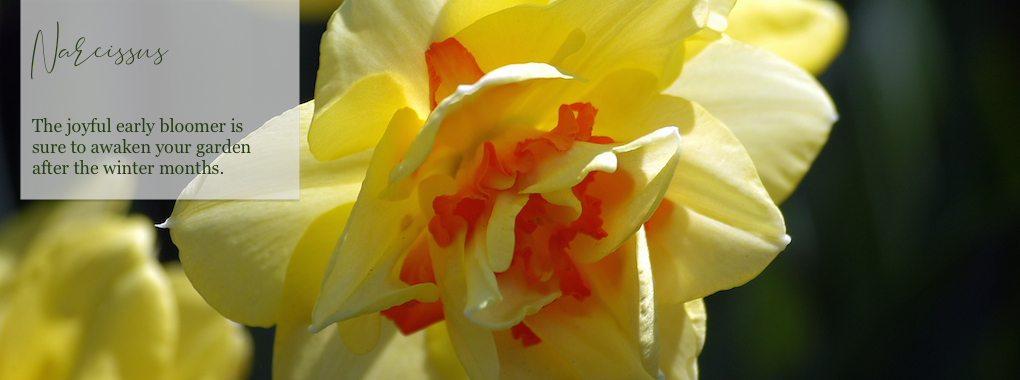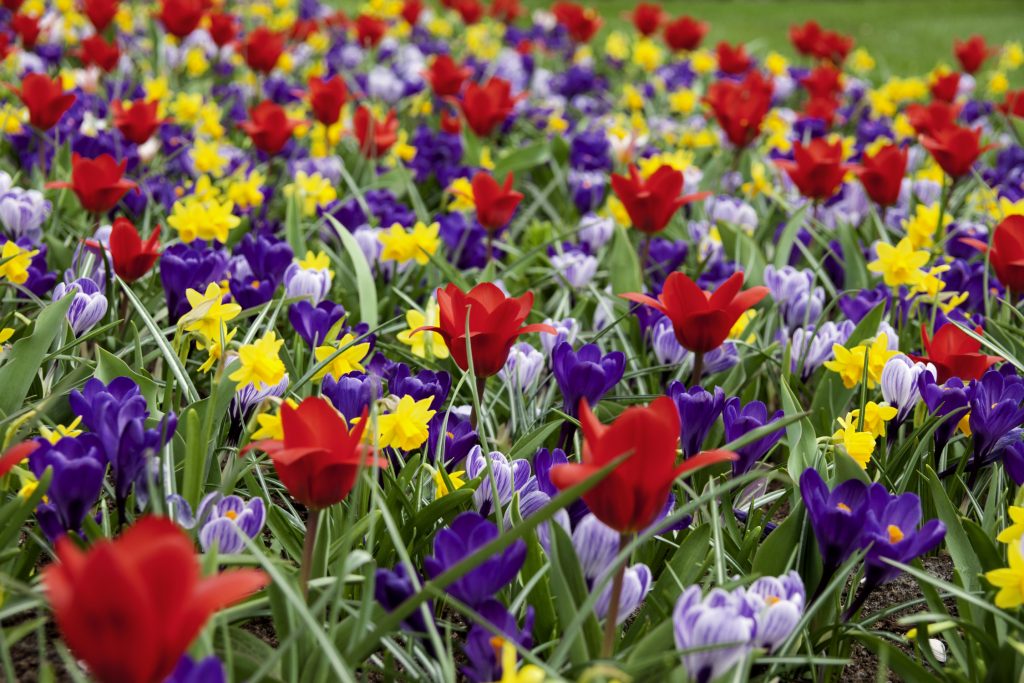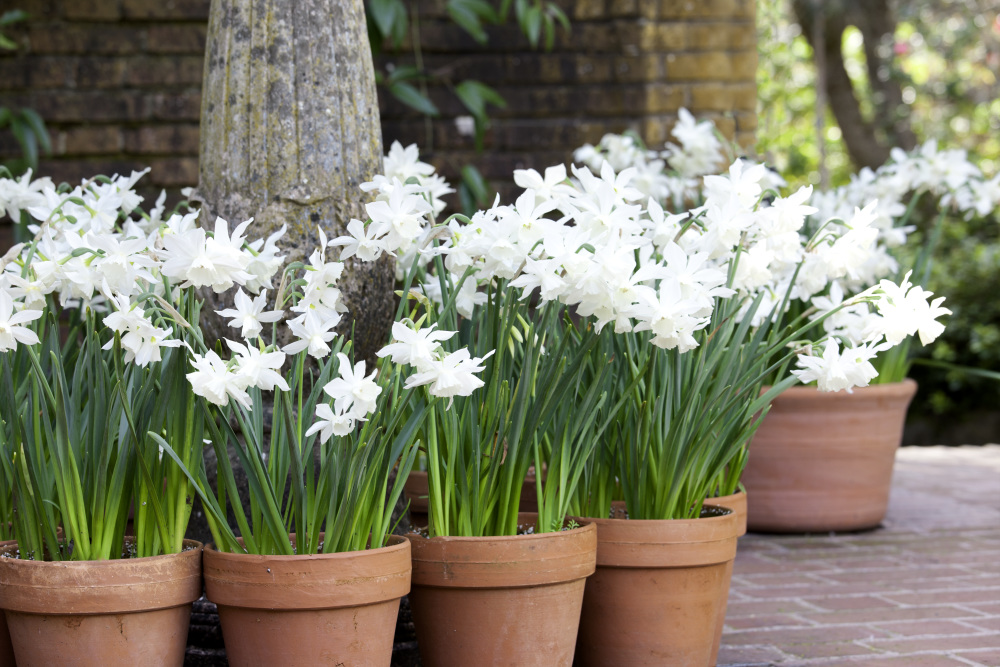
Narcissi are very tolerant bulbs and do well in light, sandy soil in full sun. However, they can tolerate heavy clay soil as long as plenty of grit is added to aid water drainage. Narcissi can also tolerate partial shade if necessary.
Plant your narcissi bulbs pointy end up during the months of Autumn through to November so they are in flower early spring.
Planting Narcissi in the garden
Once you have found your sunny position for your narcissi bulbs, plant them pointy end up about 10-15cm (4-6″) deep allowing 7-10cm (3-4″) between each bulb. Ensure your soil has adequate drainage.
To get that low-lying meadow look or to achieve a fuller border, plant plenty of shorter narcissi like Miniature Narcissus Jetfire alongside dwarf tulips like Red Riding Hood and Crocus for a field of mixed vibrant colour.

Planting Narcissi in pots
Narcissi equally do well in pots as well as the garden. Ensure your containers have adequate drainage holes so the bulbs do not get waterlogged as this will cause the bulbs to rot and cause growth problems. Plant your narcissi in a good-quality, multi-purpose compost ideally peat-free. To get a spectacular display of daffodils in pots, plant the bulbs pointy end up about 10-15cm (4-6″) deep with 5cm (2″) between each bulb for a fuller display.
Harts’ Hint
” Plant bulbs pointy end facing upwards. “

Caring for Narcissi
- To help with root and bulb formation, it’s beneficial to add a potash feed during early spring.
- Deadhead the narcissi once they have flowered to help next year’s growth.
- After flowering has finished for the season leave the foliage in place; don’t cut it off. The leaves will gather sunlight, create food through photosynthesis and strengthen the bulbs for the future.
- Water as needed during active growth periods.
- By mid summer the leaves may yellow and die back. Foliage may be removed at this point.
- Mulch over your bulbs during the winter months to protect them from frost.










